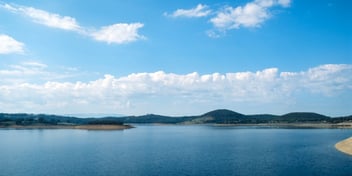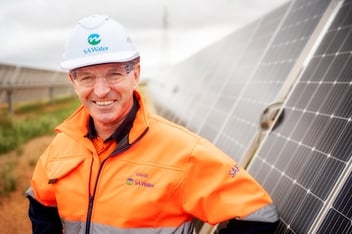Hunter Water powers up in its goal to become carbon neutral
More than $15 million worth of renewable energy systems will be installed at Hunter Water’s treatment plants and pump stations over the next four years as part of the utility’s efforts to become carbon neutral.
Funded by the New South Wales (NSW) Government, Hunter Water has just completed the first installation of a 252-panel solar array at its Branxton Wastewater Treatment Works. This includes both roof and ground-mounted panels, with scope for future expansion.
“We're really excited by the Renewable Energy Project and what lies ahead of us,” Hunter Water Managing Director Darren Cleary said.
“Electricity is one of our major expenses, accounting for about 10% of our operating costs, and solar is one of a number of opportunities available that can help to reduce these costs, and reduce carbon emissions.
“Once the program has been rolled out, we estimate an annual saving of $1.15 million on our electricity costs, which equates to a 7.37% reduction.”
Cleary said the solar-array installation is the first of many, with the utility currently considering other sites for further solar installation works.
“We are working with a shortlist of more than 20 priority sites as the initial focus of our solar rollout, including at Morpeth, Kurri Kurri, Raymond Terrace and Boulder Bay Wastewater Treatment Works,” he said.
“We see this project as an ongoing opportunity to add sites and new technologies as they emerge, including battery storage and floating solar, to help us achieve our goal of carbon neutrality.”
Furthermore, Cleary said Hunter Water was also focused on other environmentally friendly approaches, including recycled water projects and biosolid re-use.
“Our focus is on resource recovery, with recycled water from the Wastewater Treatment Works piped to The Vintage Golf Club in Pokolbin and used on the adjacent Branxton public golf course to water greens and fairways,” he said.
“Furthermore, biosolids generated at the treatment plant are used to rehabilitate mine sites in the Hunter Valley, with the fertiliser product helping to establish vegetation.”
NSW Minister for Water Melinda Pavey said the project was expected to reduce Hunter Water’s carbon footprint by 7200 tonnes of emissions per year.
“This investment is all about innovation and supporting jobs in the Hunter while also reducing Hunter Water’s electricity bill,” Pavey said.
“The 100 kilowatt system at Branxton Wastewater Treatment Works is the first in Hunter Water’s push for many solar projects, with savings generated helping to maintain affordable bills.”


